10 traditional Japanese instruments that will make your heart beat with joy
Traditional Japanese instruments are a unique and valuable component of Japan's rich musical heritage. Each instrument has its distinct sound and history, and they have been used for centuries in various traditional ceremonies, festivals, and performances. If you want to experience the beauty and complexity of traditional Japanese music, listening to these instruments will make your heart beat with their mesmerising sounds.
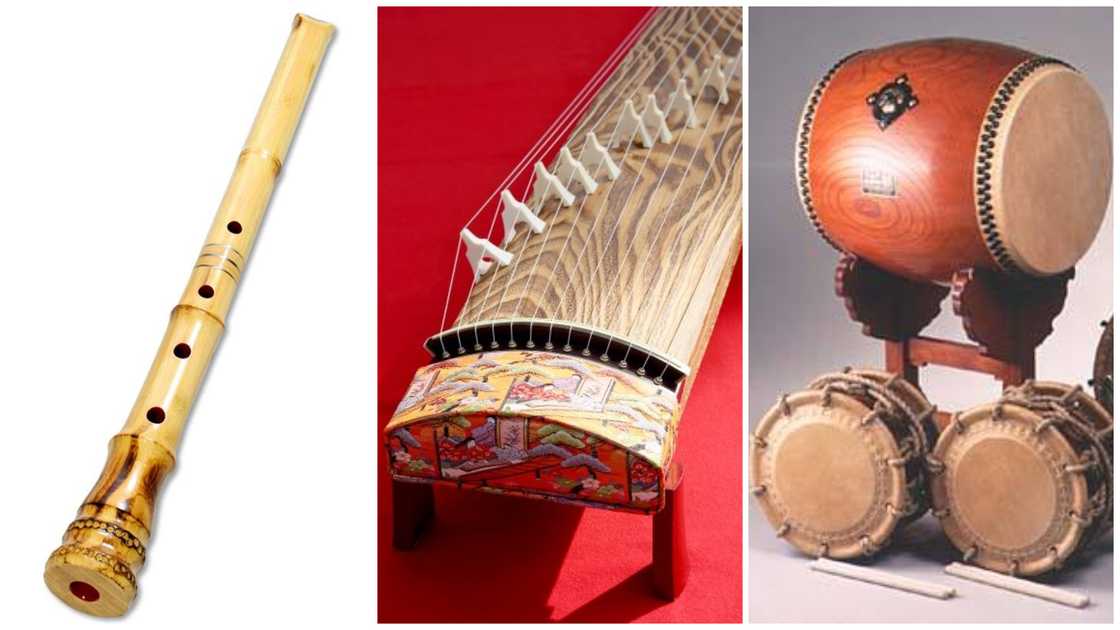
Source: UGC
Japan is known for its rich cultural heritage, and traditional Japanese music is an essential part of that heritage. Japanese music is distinctive and diverse and has a long, illustrious history. A significant component of this musical history is the traditional Japanese instruments, which have evolved over time to rank among the most fascinating and stunning in the world.
10 traditional Japanese instruments
From the powerful beats of the taiko drum to the soothing sounds of the koto, Japanese instruments have captivated audiences around the world. Here are ten traditional Japanese instruments that will melt your heart.
1. Koto

Source: Getty Images
What is the most famous Japanese instrument? Koto is a Japanese harp invented in China and later introduced to Japan in the 8th century. A classic koto has 13 strings that are tuned using movable bridges.
This device is played with the right hand's index finger, thumb, and middle finger, with the fingers enclosed by ivory fingerpicks. When playing, the koto is usually placed horizontally on the ground, and the koto player kneels next to it. The gentle and relaxing sound of the koto makes it ideal for playing folk songs and classical music.
2. Shamisen
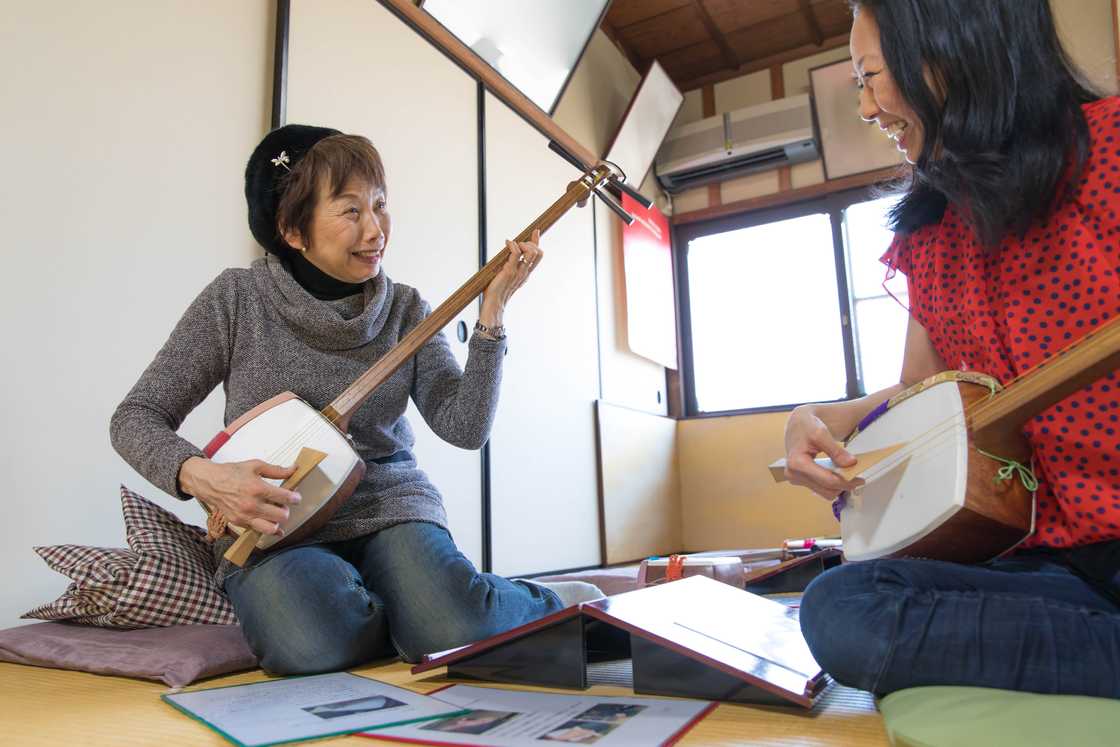
Source: Getty Images
The shamisen is one of the plucked Japanese instruments similar to a guitar in shape and size. It has a small rectangular body covered in skin and a long, thin neck. It also has three strings, and the pitch is adjusted by tuning pegs on the head, similar to a violin or guitar, but with no frets.
This device is played with a big triangular plectrum that is used to strike the strings. The shamisen is used in both folk and classical music.
3. Shakuhachi
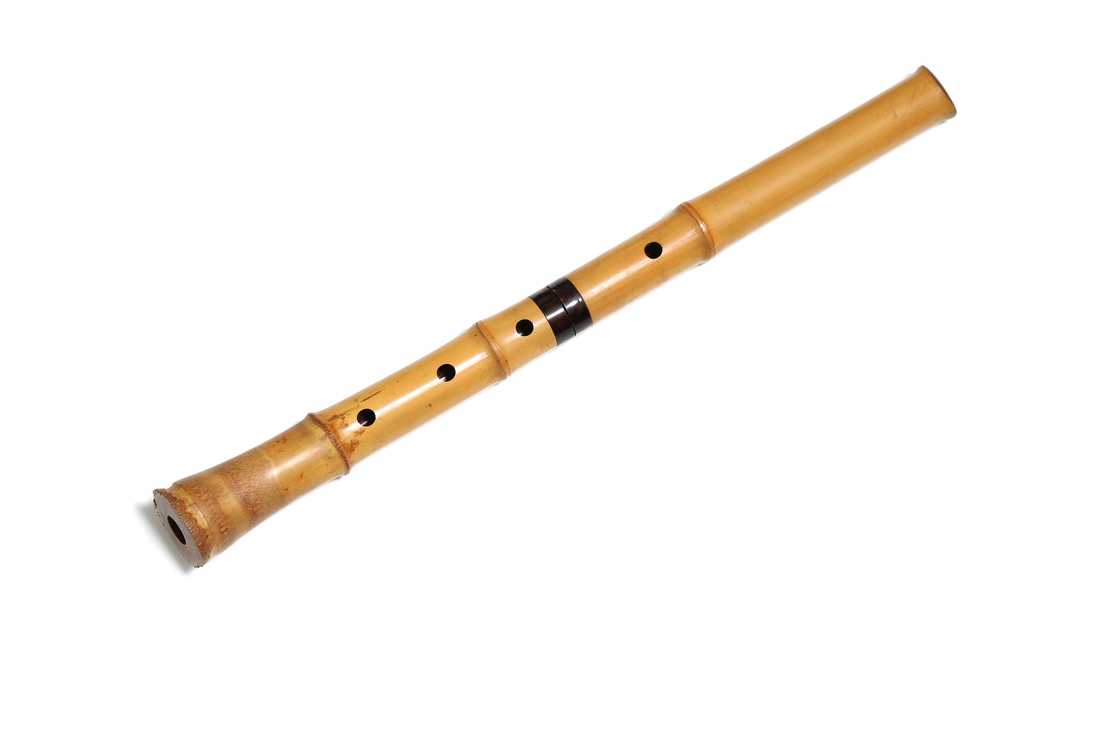
Source: Getty Images
Which is the easiest Japanese instrument to learn? The Shakuhachi is a traditional Japanese bamboo flute with a deep, rich sound. It is derived from a Chinese bamboo flute invented by a Buddhist monk, and it arrived in Japan in the late 7th century.
The Shakuhachi, unlike the Western flute, is played vertically. It has five finger holes, four on the front and one in the back. The players cover the holes with their fingertips to make different mesmerizing sounds. This musical device is one of the easiest to learn. It is frequently used during traditional festivities and in Zen meditation music.
4. Biwa
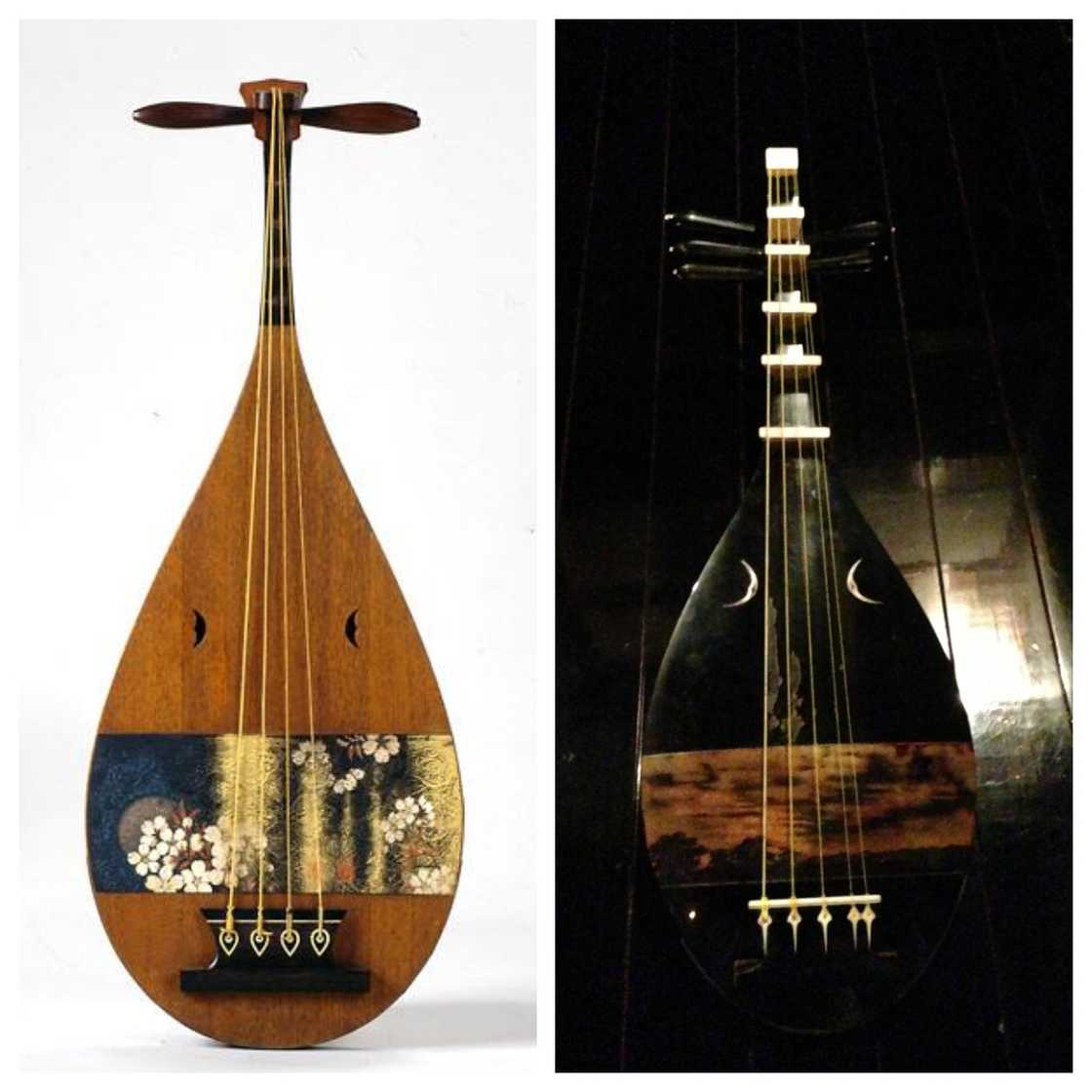
Source: UGC
A biwa is a short-necked lute that is played with a vast plectrum called a bachi. This musical tool was commonly used in traditional Japanese storytelling. It was also used in gagaku (court music) since the 7th century but lost popularity with the introduction of modern music.
However, in recent years, musicians have attempted to reintroduce this Japanese string instrument into Western music. Biwas have many variations, but most have three to five strings and four to six frets. The most popular is the satsuma biwa.
5. Taiko

Source: Getty Images
The Taiko is a drum built from a big hollowed-out tree stump. The musical instrument is played with two wooden drumsticks, producing a compelling sound.
They come in various sizes and are commonly seen at most summer events in Japan. You can also enjoy fascinating Taiko performances at martial arts exhibitions and religious rituals at shrines and temples across the country.
6. Sanshin
Sanshin is one of the Japanese stringed instruments. It is a three-stringed instrument that resembles a banjo and originates from Okinawa.
This traditional instrument has male, middle, and female strings, with the male string generating the lowest note and the female one yielding the highest. Sanshins have a fancy appearance because they are coated in snakeskin and have long necks.
7. Tsuzumi
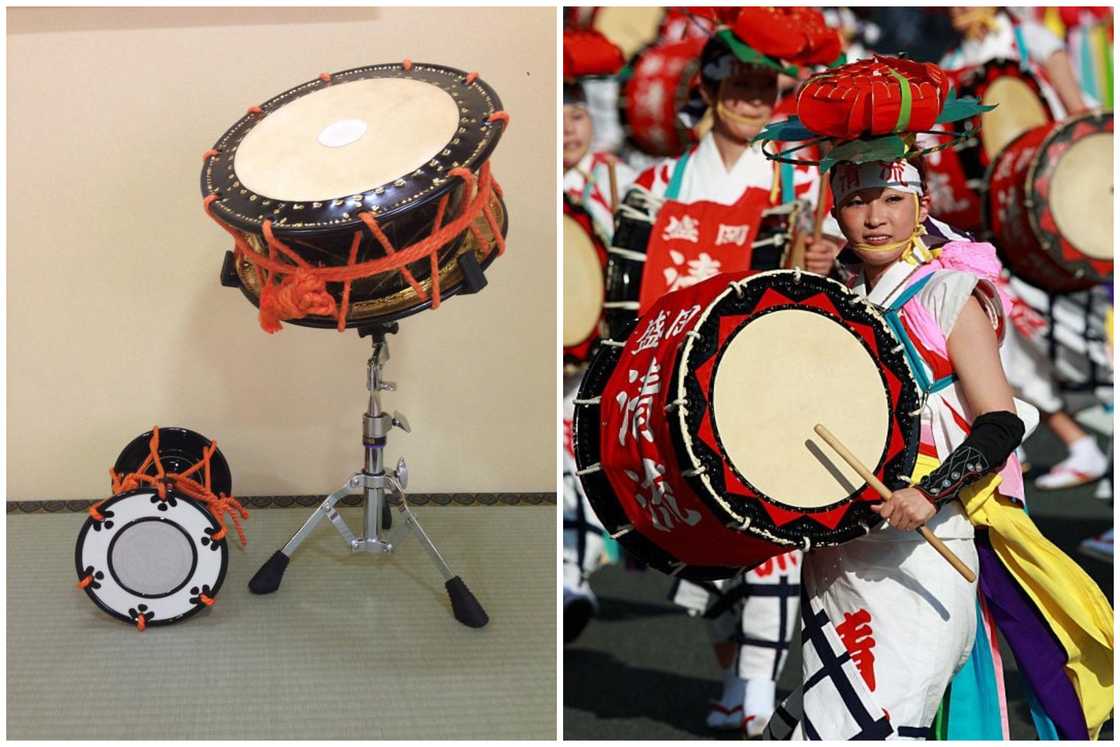
Source: UGC
The Tsuzumi is an hourglass-shaped hand drum that was used in Kabuki theatre, Japanese folk music, and a traditional Japanese dance-drama called Noh, which dates back to the 14th century.
This musical implement is frequently played in pairs, and the pitch is adjusted by pressing or releasing the cords on the drum's sides. The Tsuzumi has a sharp, rhythmic sound that is ideal for building tension and excitement.
8. Nohkan
The nohkan is a bamboo flute used in traditional Japanese Noh theatre. It has a deep, rich sound ideal for the quiet, reflective music frequently played during Noh performances. This high-pitched bamboo Japanese instrument is played by bl*wing across the top of the device and adjusting the pitch by opening and closing the finger holes.
9. Sho
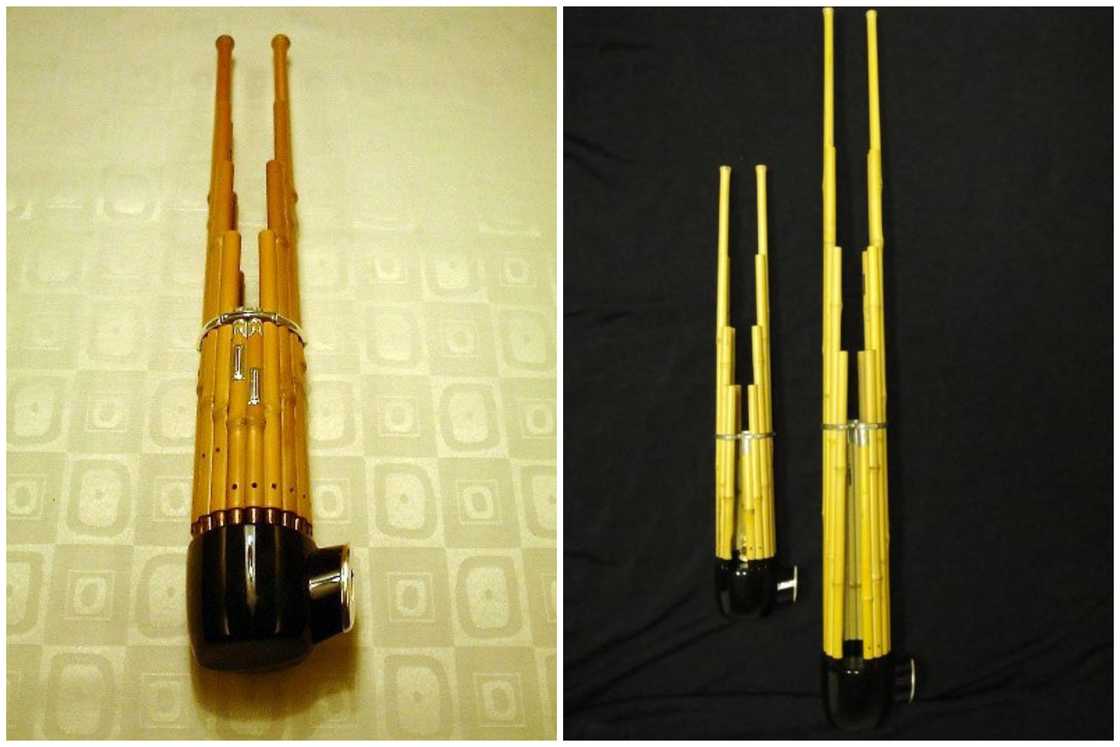
Source: UGC
The Sho is a collection of 17 bamboo pipes, 15 of which are linked together with a metal reed. When air is exhaled or inhaled, the reeds vibrate, causing the instrument to make a sound. It offers a rich, layered sound ideal for performing classical court music.
It's said to imitate the call of a phoenix, mainly because the Sho's shape resembles a bird with its wings raised.
10. Ryūteki
Which Japanese instrument is called the dragon flute? The ryūteki, commonly referred to as the dragon flute, is rarely played as a solo instrument. As a result, it is always played alongside the double-reed hichiriki. These are the two primary melodic instruments of gagaku.
To help preserve the ryūteki, the bamboo body tubing is wrapped in rattan rope or cherry bark. The dragon-carved case hints at its contents: the ryūteki's sound is thought to resemble the dragons that fly between earth and heaven.
Traditional Japanese instruments are significant components of Japan's cultural heritage. These musical instruments inspire musicians and mesmerize music lovers worldwide because of their unique and exquisite sounds.
Yen.com.gh recently published an article on 10 of the easiest instruments for children and adults to learn. Learning to play a musical instrument can be challenging and demands a lot of practice and dedication. However, regardless of skill level, everyone can learn to play a musical device.
The ukulele, recorder, piano, and harmonica are some of the easiest instruments to learn. To effectively learn and master your favourite device, it is essential to have a professional music tutor.
Source: YEN.com.gh






